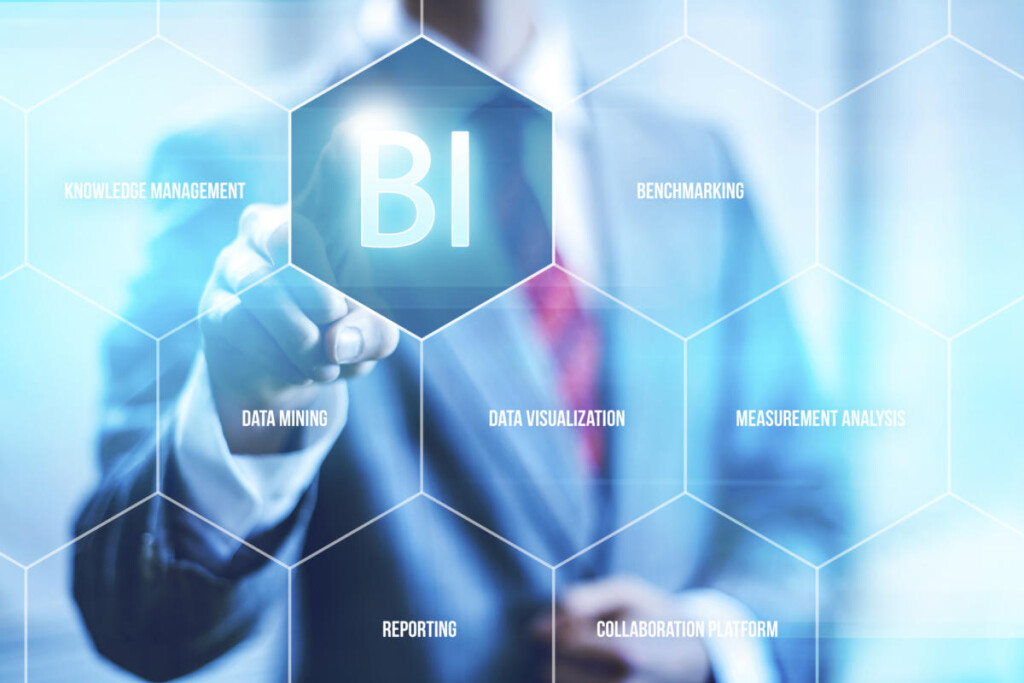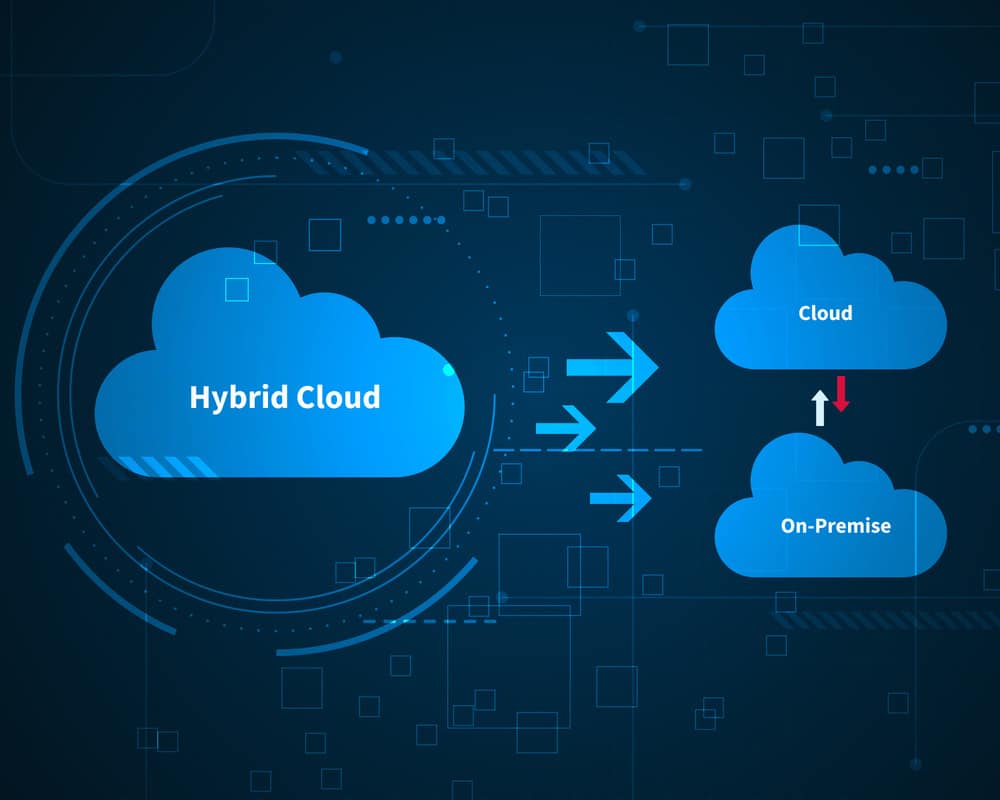10 Trends of Business Intelligence to Facilitate Data Analytics and Decision Making
As the volume and complexity of data continue to surge, the way businesses access, analyze, and act upon their data are reshaping. In this article, we delve into the top 10 trends in Business Intelligence that enrich data analytics and drive sound decision making to businesses in various domains. From augmented analytics and AI-driven insights to the rise of data storytelling and cloud-based BI solutions, these trends are paving the way for more informed and agile organizations.
- Advanced Analytics
- Self-Service BI
- Cloud-Based BI
- Hybrid Data Environments
- Data Integration
- Vertical-Specific BI Solutions
- Natural Language Processing
- Data Storytelling
- Augmented Analytics
- AI-Powered Data Discovery
Trend 1: Advanced Analytics
Advanced analytics in Business Intelligence refers to using advanced techniques, including machine learning, data mining, and predictive modeling, to analyze data and derive valuable insights. It enables organizations to go beyond historical data and descriptive analytics, making proactive and predictive decisions. With the increasing volume of data available, this trend is driven by the need for forecasting trends, personalizing customer experiences, optimizing operations, and mitigating risks.
Suppose an online clothing retailer aims to enhance its customer experience and boost sales. Using advanced analytics, the retailer can leverage such opportunities as:
- Personalized Recommendations. Implement sophisticated recommendation algorithms that suggest personalized products to customers based on their browsing and purchase history, leading to increased cross-selling and upselling opportunities.
- Customer Lifetime Value (CLV) Prediction. Analyze historical data to forecast the expected revenue a customer will generate throughout their relationship with the brand, allowing for more targeted marketing and retention strategies.
- Shopping Cart Analysis. Examine shopping cart abandonment data to identify friction points in the checkout process and implement improvements to reduce abandonment rates.
- Facilitated Inventory Management. Optimize inventory levels by forecasting demand, identifying slow-moving items, and automating reordering processes to reduce carrying costs while ensuring product availability.
To sum up, advanced analytics helps businesses to provide highly personalized experiences, increase customer loyalty, and maximize operational efficiency, ultimately leading to improved sales and profitability.
Trend 2: Self-Service BI
Self-service BI empowers non-technical users to independently access, analyze, and derive insights from data without relying on IT or data experts. It involves user-friendly BI tools and platforms that simplify the process of querying databases, creating reports, and generating visualizations.
This trend is driven by the need for granting more employees the ability to explore and interpret data. Self-service BI accelerates the decision-making process, reduces the burden on IT departments, and enhances data democratization, ultimately leading to improved operational efficiency and competitiveness in a changing business landscape.
Trend 3: Cloud-Based BI
Cloud-based Business Intelligence implies the deployment of BI tools and services on cloud computing platforms. It enhances agility, cost-efficiency, and accessibility in the data analytics process, and is a significant trend in BI because it offers several advantages:
- Provides scalability, allowing organizations to flexibly adjust their computing resources based on demand.
- Promotes accessibility, enabling users to access and analyze data from anywhere with an internet connection.
- Reduces infrastructure costs by eliminating the need for on-premises hardware and maintenance.
- Encourages collaboration as teams can easily share and discuss BI reports and dashboards in real-time.
- Ensures automatic software updates and security, freeing organizations from the burden of maintaining and updating their BI systems.
Trend 4: Hybrid Data Environments
Hybrid data environments in Business Intelligence involve a combination of on-premises and cloud-based data sources and storage solutions. Why is this trend gaining prominence? Many businesses still rely on on-premises systems for certain data due to security, compliance, or legacy reasons, while also leveraging cloud-based resources for scalability and flexibility. Hybrid environments enable seamless integration and analysis of data from these disparate sources, providing a holistic view of information critical for decision making.
This trend allows companies to bridge the gap between legacy systems and modern cloud technologies, ensuring data accessibility, scalability, and compliance while optimizing their BI capabilities.
Trend 5: Data Integration
Data integration in Business Intelligence is the process of combining and harmonizing data from various sources, such as databases, applications, and external platforms, to create a unified and coherent view of information, that enables:
- Real-time access to data
- High data quality and consistency
- Reduced data silos
- More accurate insights and informed decisions.
This trend is prominent because organizations increasingly rely on diverse data sources for decision making. Integrating data allows for a comprehensive understanding of business operations and customer interactions.
Imagine a marketing team that wants to execute targeted email campaigns. They collect data from various sources, including their customer relationship management (CRM) system, website analytics, and social media platforms. In this scenario:
- CRM Integration: Data from the CRM system is integrated with website analytics, enabling the marketing team to connect customer profiles with online behavior and purchase history.
- Social Media Data Integration: Data from social media platforms is integrated to understand customer sentiment, engagement, and interactions, which can inform content creation and engagement strategies.
- Email Marketing Platform Integration: The integrated data is then connected to the email marketing platform, allowing the team to segment customers based on demographics, behavior, and engagement.
- Personalized Email Campaigns: With this unified data, the marketing team can create highly targeted and personalized email campaigns that are relevant to each customer’s preferences and history.
Trend 6: Vertical-Specific BI Solutions

Vertical-specific BI Solutions are designed to meet the unique needs and requirements of specific verticals, such as Martech, Fintech, Publishing, or any other. As different sectors often have distinct data analytics needs, compliance regulations, and performance metrics, these solutions come pre-configured with industry-specific KPIs, data connectors, and dashboards, ensuring relevant, specialized, and ready-to-use insights. As a result, businesses leverage more targeted, industry-tailored analytics, saving time and effort on customization — and that’s why vertical-specific BI Solutions is gaining popularity.
Trend 7: Natural Language Processing
Natural Language Processing (NLP) involves using AI and machine learning to allow individuals to query and analyze data using natural language commands or questions, making BI tools more accessible to a broader audience. Users can simply ask questions like “What were last month’s sales figures?” and receive instant, relevant insights.
This trend is on the rise because it democratizes data access and analysis. It makes BI tools more user-friendly, allowing individuals, regardless of their technical background, to effortlessly extract insights from complex data sets. NLP-driven BI enhances decision making by reducing the barrier to entry for data exploration, enabling faster and more intuitive access to critical business information, and improving collaboration through conversational analytics.
Trend 8: Data Storytelling
Data storytelling in BI involves the use of data, visualizations, and narratives to simplify complex data, making it understandable and memorable. It creates a narrative structure that guides the audience through data analysis, using visual aids like charts and graphs to support key points, inform, persuade, and drive positive actions within the organization. This approach helps stakeholders connect emotionally with the data, facilitating better decision making.
Unlike NLP, which focuses on enabling computers to understand, interpret, and generate human language, the primary purpose of data storytelling is to convey a clear, compelling, and actionable message derived from data.
As organizations recognize the significance of data-driven decisions, data storytelling has become essential for bridging the gap between data analysis and effective communication.
Trend 9: Augmented Analytics
Augmented analytics is an advanced data analytics approach that combines AI and ML techniques to enhance human data analysis. It automates data preparation, identifies patterns and anomalies, and provides insights and recommendations in a user-friendly manner. Data analytics services leverage augmented analytics to uncover actionable insights and trends, enhancing decision-making processes. Augmented analytics empowers users to make faster, more informed decisions, even without extensive data analysis expertise, making it a valuable tool in Business Intelligence.
Let’s say a streaming platform uses AI to analyze user behavior and content consumption patterns. The AI algorithms can identify which genres, shows, or movies are most popular among different user segments. They can also predict when users are likely to cancel their subscriptions based on viewing trends.
This trend is gaining momentum because it addresses the growing complexity of data and the need for organizations to derive meaningful insights quickly. By automating routine tasks and offering proactive insights, it enables businesses to discover hidden patterns, trends, and opportunities in their data as well as accelerates decision making, improves data accuracy, and supports a more agile, data-driven culture.
Trend 10: AI-Powered Data Discovery
AI-powered data discovery in Business Intelligence refers to the use of AI and ML algorithms to automatically identify insights, patterns, and valuable information within large datasets. For instance, a digital marketing agency might use AI to analyze a client’s advertising campaign data. The AI algorithms could automatically uncover which ad creatives and targeting strategies are most effective, the best times to run ads, and which customer segments are most responsive.
AI-powered data discovery is a trend in BI for several reasons:
- Streamlines data analysis by automating tasks like data cleansing, pattern recognition, and outlier detection, saving time and reducing errors
- Democratizes data analysis, allowing non-technical users to explore data and gain insights, promoting a data-driven culture within organizations.
- Accelerates decision making by providing real-time insights, enabling businesses to respond quickly to changing conditions.
- Handles large and complex datasets, making it suitable for organizations dealing with massive amounts of data.
- Helps organizations gain a competitive edge by uncovering hidden opportunities and predicting future trends.
This trend reduces the burden on data analysts and data scientists by automating repetitive tasks, allowing them to focus on more complex analysis. AI-powered data discovery enhances BI’s accessibility, making insights available to a wider audience and driving informed decision making across the organization.
Closing remarks
These ten trends, from augmented analytics to AI-driven insights, can help organizations to find themselves better equipped to make informed decisions, improve adaptability to changing requirements, and chart a path toward sustained success.
Timely adoption of emerging approaches results in unlocking hidden customer insights and maintaining a competitive edge. It empowers businesses to optimize operations, reduce costs, and identify growth opportunities, as well as fosters agility in responding to market demands and regulatory requirements.
Author Bio: Yuliya Vasilko is Head of Business Development at Lightpoint Global (custom software development company with 12+ years of experience specializing in Web Development, Data Engineering, QA, Cloud, UI/UX, IoT, and more).
Yulia helps customers to define project stipulations, collect business requirements, choose primary technologies, and estimate project time frame and required resources.
Yulia has vast experience working with customers in software development for Fintech, Publishing, Healthcare, Martech, Retail & eCommerce, and other businesses located in the USA, Canada, Western Europe, UK, and Ireland.





























